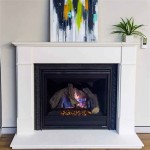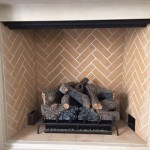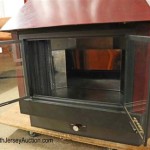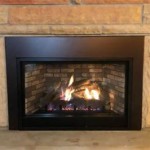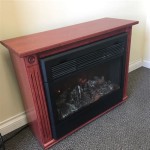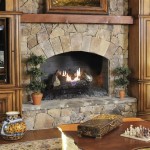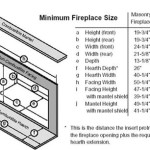Fireplace Pilot Light Summer: Understanding Summer Pilot Light Management
Fireplaces offer warmth and ambiance during the colder months, but the question of whether to leave the pilot light on during the summer months is a common one. The pilot light, a small, continuous flame, serves as the ignition source for the main burner. While it ensures immediate heat availability, it also consumes gas and contributes to heat generation, both of which can be undesirable during warmer weather. This article will explore the considerations surrounding summer pilot light management, providing a comprehensive overview of the advantages, disadvantages, and practical aspects of this topic.
The primary function of the pilot light is to ignite the main burner when the fireplace is activated. It provides a constant source of ignition, eliminating the need for an external spark or match. This convenience is especially appreciated during power outages or when relying on the fireplace for supplemental heating. However, the continuous operation of the pilot light translates to a constant consumption of natural gas or propane, depending on the fuel source for the fireplace.
Managing the pilot light during the summer involves weighing the benefits of its continuous operation against the potential drawbacks. The decision to leave it on or turn it off should be based on an informed understanding of the fireplace's design, the homeowner's priorities, and local climate conditions. A thorough evaluation of these factors allows homeowners to make the most appropriate choice for their specific situation.
The Advantages of Keeping the Pilot Light On During Summer
Despite the heat and fuel consumption associated with a continuously burning pilot light, there are several reasons why some homeowners choose to keep it on throughout the summer. These advantages primarily relate to system reliability, moisture control, and ease of use.
Maintaining system reliability is a significant benefit. The continuous flame of the pilot light helps to keep the gas line clear and free from debris. If the gas supply is interrupted, the pilot light will relight automatically when the gas flow is restored, preventing the need for manual relighting. This is particularly advantageous in areas prone to power outages or gas supply fluctuations.
Furthermore, the pilot light generates a small amount of heat, which can help to prevent moisture buildup within the firebox and chimney flue. This is especially important in humid climates where moisture accumulation can lead to rust, corrosion, and mold growth. By keeping the firebox slightly warmer, the pilot light helps to circulate air and dissipate moisture, preserving the integrity of the fireplace system. This proactive moisture control reduces the risk of costly repairs and extends the lifespan of the fireplace.
Convenience is another factor. Keeping the pilot light on ensures that the fireplace is always ready for immediate use. There is no need to manually relight the pilot light each time the fireplace is needed, which can be especially convenient for those who use their fireplaces frequently, even during the summer months, for example, during unexpected cool evenings. Moreover, some fireplaces have electronic ignitions systems dependent on a constant pilot flame to function optimally. Removing the pilot light in such systems may not be the wisest choice for long-term fire place health.
The Disadvantages of Keeping the Pilot Light On During Summer
Conversely, keeping the pilot light on during the summer has drawbacks, primarily related to energy consumption, heat generation, and safety concerns. These disadvantages can be significant, especially for homeowners concerned about energy efficiency and minimizing their environmental impact.
Energy consumption is the most prominent disadvantage. Although the pilot light is a small flame, it burns continuously, consuming a steady amount of natural gas or propane. Over several months, this consumption can add up to a considerable amount of wasted fuel. According to the U.S. Department of Energy, a pilot light can consume approximately 350 to 500 British thermal units (BTUs) per hour. This translates to a significant amount of wasted gas over the course of a summer. In areas with high gas prices, the cost of keeping the pilot light on can be substantial, impacting the homeowner's utility bills.
Heat generation is another concern. The pilot light produces a small amount of heat that radiates into the room. During the summer, when cooling systems are already working hard to maintain a comfortable temperature, the additional heat from the pilot light can exacerbate the problem. This forces air conditioners to work harder, increasing energy consumption and potentially leading to higher electricity bills. In some cases, the additional heat can also make the room feel less comfortable, negating the benefits of air conditioning.
Safety implications, while rare, also need considered. Although modern fireplaces are designed with safety features to prevent gas leaks, there is always a small risk associated with a continuously burning flame. In the event of a gas leak, the pilot light could potentially ignite the gas, leading to a fire or explosion. While this is an unlikely scenario, it's important to be aware of the potential risks and take necessary precautions, such as ensuring that the gas line is properly maintained and that the fireplace is regularly inspected by a qualified technician.
Practical Considerations for Summer Pilot Light Management
When deciding whether to leave the pilot light on or turn it off during the summer, homeowners should consider several practical factors. These include the type of fireplace, local climate conditions, personal preferences, and safety concerns. A careful assessment of these factors will help homeowners make the best decision for their individual circumstances.
The type of fireplace is a crucial factor. Modern fireplaces with electronic ignition systems may be more sensitive to fluctuations in gas pressure and humidity. Turning off the pilot light in these systems may cause problems with relighting or system performance. Older fireplaces with standing pilot lights are generally more tolerant of being turned off and relit. Homeowners should consult the owner's manual or a qualified technician to determine the best approach for their specific fireplace model.
Local climate conditions also play a significant role. In humid climates, the risk of moisture buildup in the firebox and chimney flue is higher. Keeping the pilot light on can help to mitigate this risk by preventing moisture damage. In drier climates, the risk of moisture buildup is lower, and it may be more practical to turn off the pilot light to save energy. Homeowners should consider the average humidity levels in their area when making their decision.
Personal preferences are also important. Some homeowners value the convenience of having the fireplace always ready for immediate use, even if it means consuming a small amount of extra gas. Others are more concerned about energy efficiency and minimizing their environmental impact. The decision to leave the pilot light on or turn it off is ultimately a personal choice based on individual values and priorities.
Safety concerns should be paramount. Before turning off the pilot light, homeowners should ensure that they know how to relight it safely. This typically involves following the manufacturer's instructions and taking precautions to prevent gas leaks. If you are unsure about the procedure, it is always best to consult a qualified technician. Regular maintenance of the fireplace and gas lines is also essential to prevent safety hazards. A yearly inspection by a qualified technician can identify and address potential problems before they become serious.
In addition, consideration should be made to the potential for insect infestation within the gas line during periods of disuse. Spiders and other small insects are known to build nests inside gas lines, potentially obstructing gas flow and causing malfunctions. Periodically running the fireplace for a short duration can help prevent this issue by displacing any existing insect colonies. Additionally, ensuring the area around the fireplace is clean and free of debris can help deter these pests from making their home near the gas line.

Does The Pilot Light Need To Be Turned Off In Summer We Love Fire

Turn The Pilot Light Off During Summer Gas Fireplace Tips

Should I Turn The Pilot Light Off During Summer

Should You Turn Off The Pilot On Your Fireplace This Summer

Should You Turn Off The Pilot On Your Fireplace This Summer

Should A Gas Fireplace Pilot Light Be Turned Off In The Summer

Should I Leave My Gas Fireplace S Pilot On Or Off During Summer

Should I Turn Off The Pilot Light In Spring B C Comfort Fireplace Hvac Repair Installation

Preparing A Gas Fireplace For The Summer

Save Money And Turn Off Your Pilot Light For The Summer
Related Posts

